Looking to start a small backyard farm or homestead and want to know what is the most profitable animal to breed? When it comes to earning money by raising animals, there are many options to consider beyond the usual chickens, cows and pigs. Each type of animal has its own benefits and drawbacks when it comes to profitability, care requirements, and startup costs.
This article will provide a detailed overview of over 15 different farm animals to help you determine the most lucrative livestock breeding opportunities.
Most Profitable Farm Animals
Chickens

Chickens are one of the most popular animals to raise for profit, and for good reason. As long as you have just a small amount of space, you can raise chickens and benefit from their high productivity.
Costs: A standard chicken coop for a small flock of 5-10 birds will cost $100-$500 to setup. Chicks cost just $3-$5 each. Adult hens and roosters range from $5-$20 per bird. Feed costs around $0.25 per bird daily.
Income Streams:
- Eggs – Hens produce eggs daily that can be sold for up to $5 per dozen.
- Meat – Broilers reach slaughter weight at 6-8 weeks old. Meat chickens sell for $3-$5 per pound.
- Chicks – Easily produce chicks to sell. Chicks fetch $3-$5 each.
With just a handful of chickens, you can easily earn a couple hundred dollars per month through egg and meat sales. Chickens are hugely productive for the space required.
Rabbits

Another small livestock option perfect for backyards are rabbits. They breed rapidly, require little space, and have multiple profit opportunities.
Costs: A pair of breeding rabbits runs $50-$150. A basic hutch can be built for $50-$150. Rabbits eat approximately $1 per day each.
Income Streams:
- Meat – Rabbits grow quickly, reaching 4-5 lbs in just 8-12 weeks. Meat sells for $5-$8 per lb.
- Kits – Does kindle large litters of 6-12 kits. Kits sell for $15-$25 each.
- Manure – Rich rabbit manure compost sells for up to $5 per lb.
Rabbits offer quick returns since they reach slaughter weight so fast. And with frequent large litters, rabbitries can easily churn out product.
Bees

Beekeeping appeals to homesteaders interested in harvesting their own honey. But bees offer much more income potential beyond just honey sales.
Costs: A beginner beekeeping setup with hive boxes, bees, and equipment runs $400-$600. Annual costs are approximately $50 per hive.
Income Streams:
- Honey – A thriving hive produces 30-60 lbs of honey, selling for $3-$6 per lb.
- Beeswax – 1 lb of beeswax sells for $5-$10.
- Nucs/Queens – Established hives can be divided and sold as nucs for $100-$150 each. Queens sell for $25-$30.
- Pollination – Renting hives to orchards for pollination generates up to $75 per hive.
With strong hives, apiaries can profit from honey, wax, nucs, queens, and pollination every season. Plus, bees are fascinating creatures to work with.
Alpacas

For small farms with more space, alpacas are an increasingly popular livestock choice. Their fine fleece and low care requirements make them a profitable fiber animal.
Costs: Alpacas cost $1500-$5000 per head. Annual care costs run $400-$500 per animal.
Income Streams:
- Fiber – Alpacas produce 5-10 lbs of fleece yearly, selling for $4-$7 per lb.
- Breeding Stock – High quality alpacas sell for $2000-$15,000+ as breeding/show stock.
- Manure – Excellent fertilizer can fetch $5-$10 for a 50 lb bag.
With substantial fleece yields and valuable cria, alpacas easily earn back their initial investment over time. Their gentleness also makes them pleasant livestock.
Goats
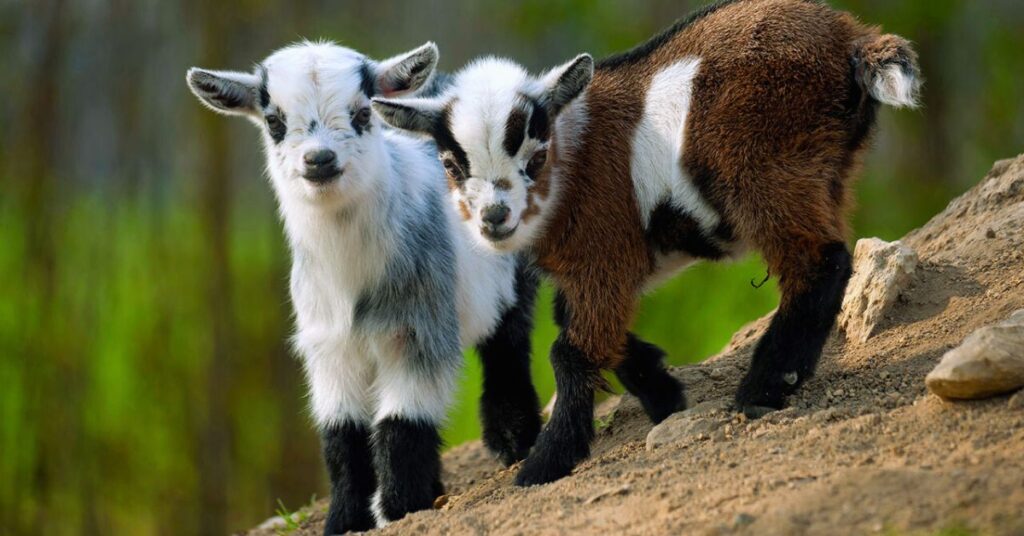
From brush clearing to artisan dairy products, goats provide a wide range of profitable opportunities for small farms. Their inexpensive care and versatile utility make them ideal homestead livestock.
Costs: Goats cost $75-$300 each. Housing and fencing runs $1000-$5000. Feed is approximately $1 per goat daily.
Income Streams:
- Milk – Dairy goats average 830 gallons of milk yearly. Milk sells for $5-$8 per gallon.
- Cheese/Soap – Value-added dairy products generate additional sales.
- Meat – 60-70 lb market goats sell for $2-$3 per lb live weight.
- Breeding Stock – Quality does and bucks sell for $300-$1000+ as herd replacements.
- Brush Clearing – Rent out herds for efficient brush control.
With ample milk yields and breeding stock sales, a small goat herd can produce substantial revenues beyond just meat sales.
Poultry (Ducks, Geese, Guinea Fowl)
Raising alternative poultry species like ducks, geese, and guinea fowl is an easy way to diversify a small farm. These unique birds can be quite profitable.
Costs: Juvenile birds cost $3-$5 each. Simple housing can be built for $75-$200 or more. Feed runs $0.20-$0.25 daily.
Income Streams:
- Eggs – Eggs sell for $2-$4 per dozen, often at a premium price.
- Meat – Specialty poultry averages $4-$6 per lb processed.
- Live Birds – Mature ducks, geese, and guineas sell for $10-$25 each.
With decent egg production and meat yields, alternative poultry can be a solid income stream for small operations. Their foraging abilities also helps control costs.
Pigs
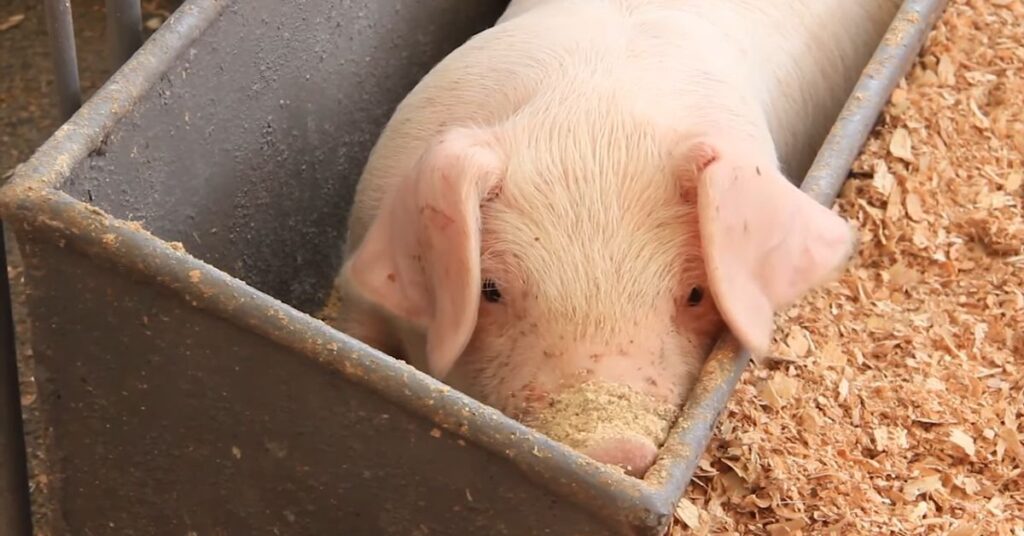
Despite requiring more space than other animals, pastured pigs present a worthwhile livestock opportunity, providing quality pork and piglets for sale.
Costs: Weaner piglets cost around $50 each. Basic pig pens run $300-$2000 depending on materials and size. Feed averages $1.50-$2 daily per pig.
Income Streams:
- Pork – Pastured pork fetches $6-$9 per lb at market weight.
- Piglets – Weaned piglets sold as feeders bring $100-$150 each.
- Breeding Stock – Quality breeder gilts and boars sell for $300-$500+
While feed costs are higher for pigs, their quick growth, savory pork, and large litters can provide respectable profits.
Sheep
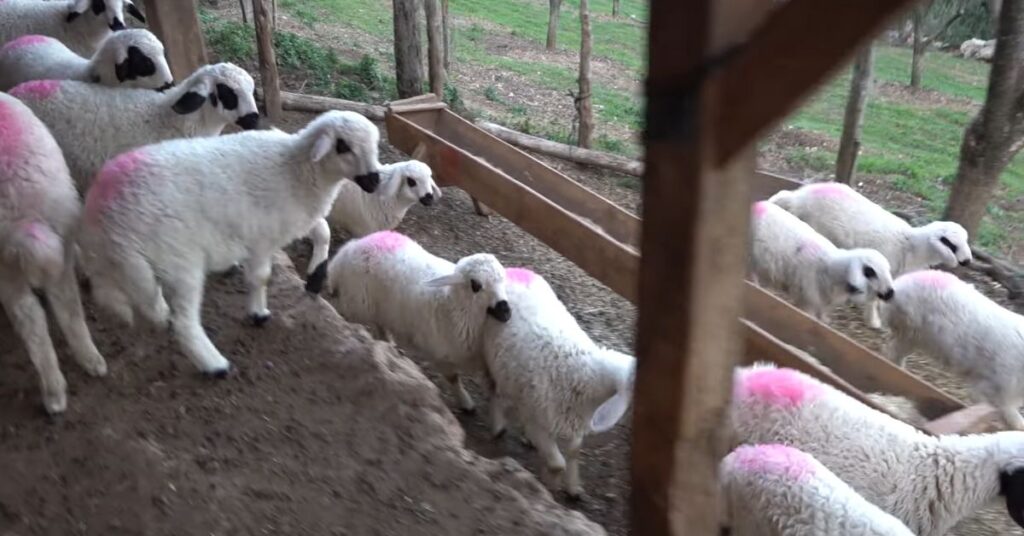
Sheep offer diverse income streams, from wool and milk to lamb sales, that appeal to many homesteaders. Their flocking instincts also make sheep easier livestock to manage than cows.
Costs: Ewes cost $175-$300 each. Fencing for a small flock runs $1000-$3000. Sheep eat approximately $0.80-$1 worth of hay per head daily.
Income Streams:
- Wool – Sheared wool sells raw for $2-$3 per lb.
- Milk – Dairy ewes produce 200-1700 lbs of milk yearly. Milk fetches $6-$8 per gallon.
- Lambs – Market lambs bring $2-$4 per lb butchered.
- Breeding Stock – Registered breeding stock ranges from $300-$1000+
Wool, milk, and lamb sales provide steady diverse income from a small flock of sheep making them quite profitable. Their grazing habits also help control costs.
Guinea Hogs
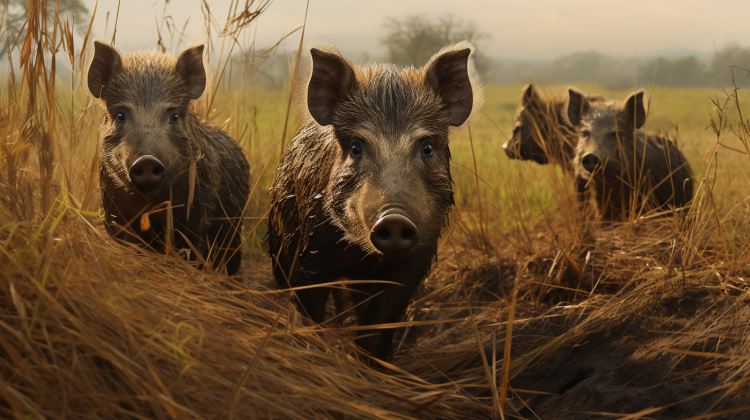
With their efficient foraging and tasty meat, Guinea hogs present a profitable opportunity for homesteaders able to handle their high intelligence.
Costs: Guinea hogs cost $200-$600 each with young piglets around $100-$150. Portable pen fencing runs $150-$300. Feed costs are minimal with good forage.
Income Streams:
- Pork – Guinea hog pork sells for $6-$12 per lb at slaughter weight.
- Piglets – Weaned piglets sold as feeders bring $100-$250 each.
- Breeding Stock – Quality boars and sows sell for $300-$1000.
While intelligent and requiring strong fencing, Guinea hogs efficiently produce premium pork and large litters of piglets making them quite lucrative.
Unique and Exotic Animals
Beyond traditional farm animals, some unique and exotic livestock options can also be quite profitable for breeders able to accommodate their special care needs.
Ostriches

With lucrative breeding stock and substantial meat yields, raising ostriches for profit presents a rewarding opportunity for farmers able to handle their size.
Costs: Juvenile ostriches cost $1000-$2000 each. Specialized housing runs $5000-$15,000. Ostrich feed costs $4-$8 daily.
Income Streams:
- Breeding Stock – Mature breeder ostriches sell for $6000-$10000 each.
- Meat – Ostrich meat fetches $10-$30 per lb at slaughter. Each bird yields 60-100 lbs of meat.
- Hides – Ostrich hides sell for $300-$500 each.
- Feathers – Decorative feathers bring $1-$3 each.
With high value breeding stock, immense meat production, and valuable hides and feathers, ostriches offer tremendous profit potential for dedicated producers.
Emus
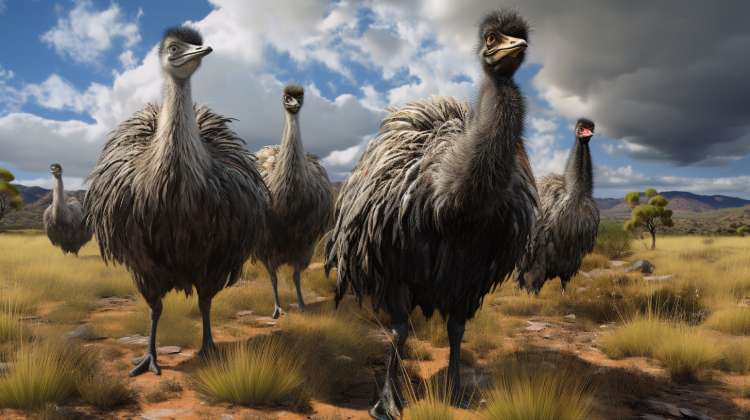
Related to ostriches, emus are another sizable exotic bird that can be quite lucrative to breed if given room to roam.
Costs: Juvenile emus run $400-$1200 each. Basic housing is $2000-$5000. Daily food intake is 2-4 lbs of feed.
Income Streams:
- Breeding Stock – Mature breeders sell for $1500-$5000 each.
- Meat – Emu meat brings $18-$25 per lb processed. Each emu provides 35-45 lbs of meat.
- Oil – Emu oil fetches $25 per ounce.
- Leather – Emu leather can be sold for $25 per square foot.
From breeding stock to meat, emu oil, and leather sales, emus provide multiple profitable options. Their calmer nature and smaller size compared to ostriches also makes them a bit easier to manage.
Beefalo
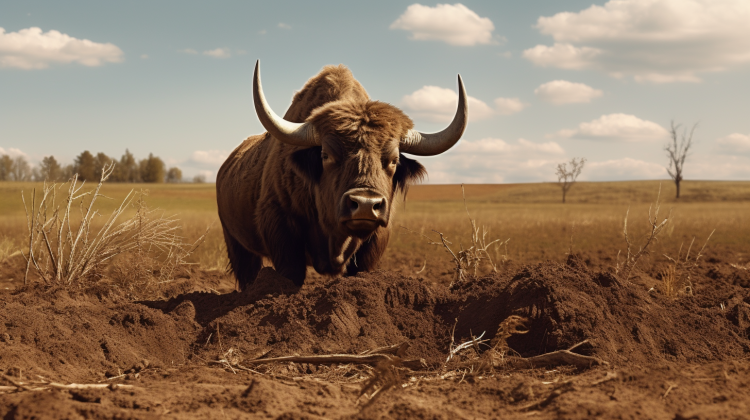
Beefalo present an intriguing opportunity, crossing the traits of domestic cattle with bison to produce a hardy, healthy beef product.
Costs: Beefalo calves cost $800-$1500 each. Fencing sufficient for bison runs $5000-$20000. Hay costs are $1-$3 daily per head.
Income Streams:
- Meat – 100% grass-fed beefalo meat brings $6-$12 per lb hanging weight.
- Breeding Stock – Proven breeder stock sells for $2000-$5000 head.
- Hides – Valuable hides fetch $100-$300 each.
For farmers able to accommodate the substantial fencing needs and winter feed costs, beefalo provide healthy premium meat and calves that strongly appeal to the grassfed cattle market.
Elk

While requiring ample space for grazing, raising elk can be quite lucrative given sufficient land and handling facilities.
Costs: Calves cost $1000-$5000 each. Land requirements are 2+ acres per animal. Winter feeding costs can exceed $5 daily per elk.
Income Streams:
- Meat – Lean elk meat sells for $18-$25 per lb. Each carcass yields 200-300 lbs.
- Antler Velvet – Medicinal velvet antler sells for $80-$150 per lb.
- Breeding Stock – Bulls and Cows cost $2500-$10000 each.
Though intensive in acreage and handling needs, elk provide very healthy lean meat and the highly lucrative velvet antler, making them profitable given sufficient scale.
Bison

With consumer demand for bison meat growing steadily, raising bison is becoming an increasingly viable opportunity for cattle farmers able to accommodate these large powerful animals.
Costs: Calves cost $1000-$2000 each. Each bison needs 2+ acres for grazing. Annual hay costs can exceed $750 per animal.
Income Streams:
- Meat – Bison meat sells for $6-$12 per lb processed. Yield is 600-800 lbs per animal.
- Breeding Stock – Proven breeders sell for $2000-$5000 each.
- Hides – Valuable hides bring $100-$300 each.
While needing robust infrastructure, bison produce very substantial revenues from meat sales and breeding stock given sufficient acreage to support a herd, making them quite profitable.
Choosing the Best Livestock for You
When deciding what livestock are most profitable for your particular situation, carefully consider the following:
- Available Space – Acreage and shelter needs vary tremendously between livestock species. Make sure to select animals sized appropriately for your farm. Chickens need just small coops while cattle need acreage.
- Affordable Startup Costs – Initial purchases of livestock and housing represents a substantial upfront investment. Opt for species with cheaper startup costs within your budget.
- Time Commitment – Some stock like poultry require daily attention while other ruminants like cattle need less frequent management. Assess your ability to routinely care for livestock daily before committing.
- Feeding Expenses – analyze the feed, grazing, and hay costs needed to properly nourish the species in question. opt for species whose nutrition needs best match the resources your land can provide.
- Infrastructure – Fencing, housing, equipment, and handling facilities requirements vary greatly between livestock species. Ensure you can properly contain, shelter, and manage the species under consideration.
- Marketing Outlets – Before choosing a livestock species, research your local markets and processing options for selling your products and livestock. Ensure sufficient opportunity exists to market your products.
- Regulations – Look into whether special permits, licenses, or inspections apply for selling livestock products like meat, eggs, or dairy where you live. Comply with all regulations before selling food products.
Conclusion
Raising productive, profitable livestock requires careful consideration of many factors from available space to startup costs and time obligations. While chickens are the easiest livestock for small acreages, larger animals like cattle and horses present substantial profit potential given sufficient land and investment. Weigh your own skills, resources, and goals to determine which livestock species makes the most sense for your own small farm or homestead. With good planning and research, breeding livestock can become a fulfilling and financially rewarding enterprise. Let us know in the comments if you have any other questions!
